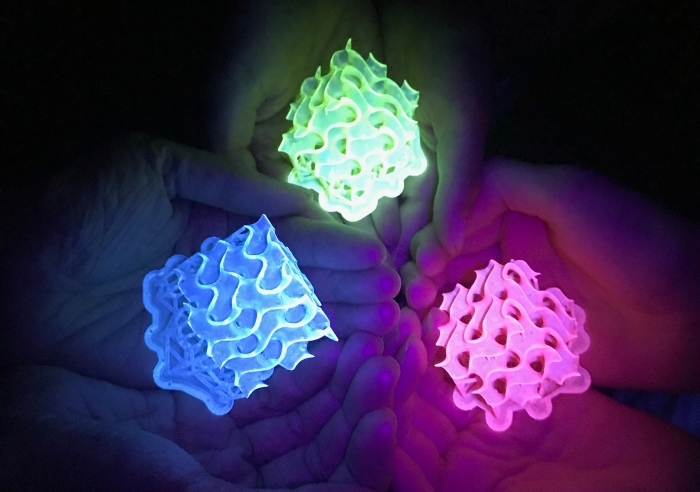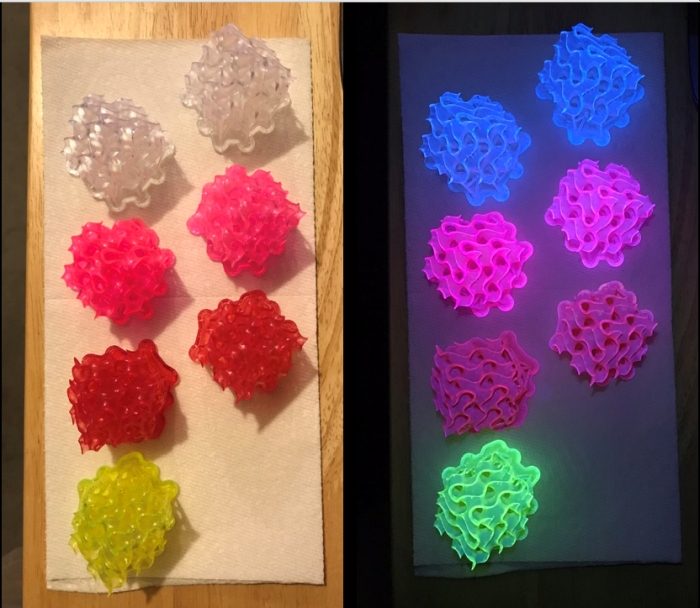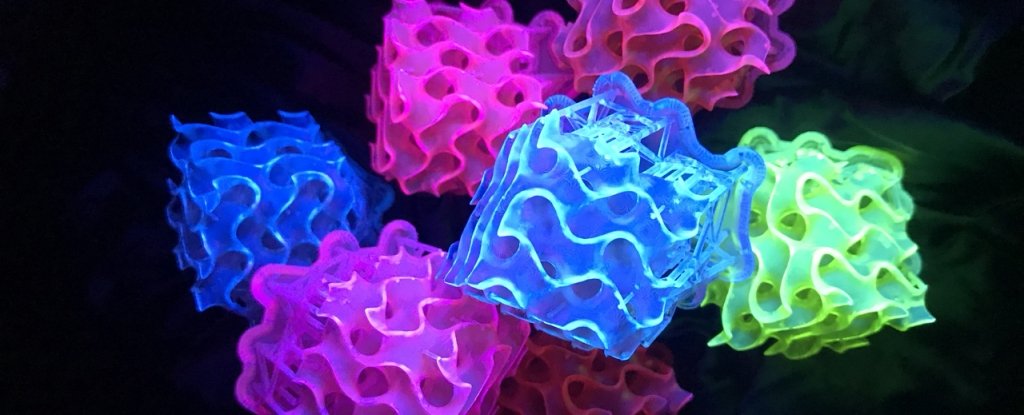Products You May Like
The world has a new brightest fluorescent material, and it’s the first of its kind. Rather than trying to improve fluorescent molecules, a team of chemists have developed a new material that preserves the optical properties of fluorescent dyes.
This effectively prevents one of the biggest problems in producing fluorescent materials – the tendency of fluorescent dyes to fade and change colours when converted to a solid state from a liquid. And the work isn’t just done for fun.
“These materials have potential applications in any technology that needs bright fluorescence or calls for designing optical properties, including solar energy harvesting, bioimaging, and lasers,” said chemist Amar Flood of Indiana University.
“Beyond these, there are interesting applications that include upconverting light to capture more of the solar spectrum in solar cells, light-switchable materials used for information storage and photochromic glass, and circularly polarised luminescence that may be used in 3D display technology.”
Fluorescent molecules absorb light, and then re-emit it at longer, lower-energy wavelengths. Found far beyond the highlighters you used on your school notes, they have many practical applications, from fluorescent biomarkers in cell research, to OLED screen technology.
However, of more than 100,000 fluorescent dyes developed to date, almost none can be mixed predictably and reliably; creating solid fluorescent materials is equally challenging. When the dyes are converted to a solid, they tend to undergo quenching (a dimming in brightness), their colours change, and their quantum efficiency degrades.
It’s not that chemists don’t understand why this happens. It’s a well-understood phenomenon called exciton coupling. When the dyes are converted into a solid, they become packed close together, which results in them becoming coupled.
The optical changes that arise from this coupling are hard to predict, but it’s safe to say that reliably transferring the optical properties of a fluorescent liquid to a solid is very difficult to do.
 3D-printed shapes with the new material. (Amar Flood)
3D-printed shapes with the new material. (Amar Flood)
“The problem of quenching and inter-dye coupling emerges when the dyes stand shoulder-to-shoulder inside solids,” Flood said. “They cannot help but ‘touch’ each other. Like young children sitting at story time, they interfere with each other and stop behaving as individuals.”
So, the team developed a solution to the problem based on keeping the fluorescent molecules apart. They took a colourless solution of macrocycle molecules called cyanostars, and mixed them with the fluorescent dye.
This use of macrocycles – a large class of ring-shaped molecules – isn’t a new idea, and others have tried it before. But the big difference is that these earlier attempts used coloured macrocycles.
As their new solution dried, it formed what the team called small-molecule ionic isolation lattices (SMILES) that effectively kept the dye molecules compartmentalised apart from each other, preventing them from interacting, and preserving their optical properties with high fidelity.
“Some people think that colourless macrocycles are unattractive, but they allowed the isolation lattice to fully express the bright fluorescence of the dyes unencumbered by the colours of the macrocycles,” Flood said.
 The new materials under white light (left) and UV light (right). (Amar Flood)
The new materials under white light (left) and UV light (right). (Amar Flood)
This material can then be taken in several directions. It can be grown into crystals; it can form a dry powder; or it can be incorporated directly into polymers. The researchers found it worked perfectly with several commercially available fluorescent dyes, which, they said in their paper, “mark these materials as plug and play”.
This means that any currently available fluorescent dye should work off the shelf with the team’s macrocycle solution to produce a gorgeously glowy, solid material that accurately preserves the properties of the liquid dye.
But there’s still work to be done before we’re at that point. The first step was developing the material. Now the team has to study it.
“These materials are totally new, so we do not know which of their innate properties are actually going to offer superior functionality,” Flood said.
“We also do not know the materials’ limits. So, we will develop a fundamental understanding of how they work, providing a robust set of design rules for making new properties. This is critical for putting these materials into the hands of others – we want to pursue crowd sourcing and to work with others in this effort.”
The research has been published in Cell Press.
